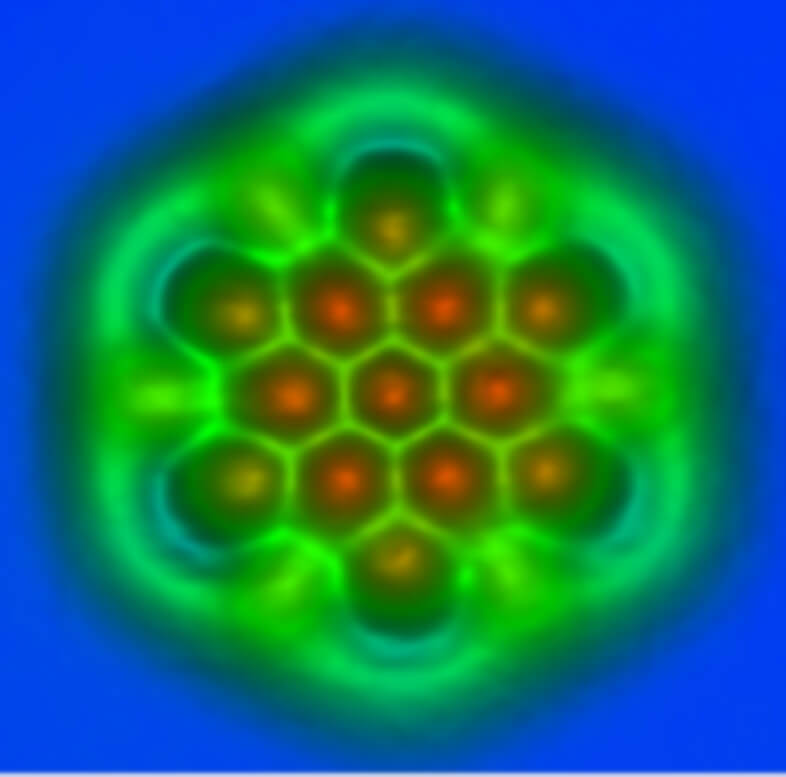The researchers at IBM used a microscope that measures atomic forces under high pressure, at extremely low temperatures - in order to present a detailed picture of the carbon monoxide molecules

Three researchers at IBM's research laboratories in Zurich have won the prestigious Feynman Prize, awarded by the Foresight Group, which works to promote research in the field of nanotechnology. The three, Gerhart Meier, Leo Gross and Yasha Rapp, will receive the award thanks to groundbreaking research in the field of producing images at the molecular level, in a way that makes it possible to control the joining and breaking of chemical bonds between single atoms.
The researchers at IBM used a microscope that measures atomic forces under high pressure, at extremely low temperatures - in order to present a detailed picture of the carbon monoxide molecules. These pictures can come instead of diagrams and graphic descriptions familiar from chemistry books - and allow a better understanding of the substance's essence.
The Feynman Award was presented to team members at the 2013 Foresight Conference in Palo Alto, California.

6 תגובות
I'm a physicist and I don't understand chemistry that much, but I can't figure out how CO is?
I guess most of what you see is empty and the green nodes are the places of the atoms.
Are you sure it's not C60 - bucky ball?
From what I read about photographing a specific molecule in the article, there should be no principled prevention of photographing the helix.
I'm back again. From what is written in the academic article, from my skimming understanding rather than a thorough reading, there is a translation here and not a direct presentation of radiation reflection photography which is affected by the elasticity of the material. X-ray-like decoding of the lattice structure but at an atomic level. In recreating the coil from Bragg scattering in X-rays, with today's computer capabilities it is possible to draw the coil in roughly the same way, only it will not be a photograph at an interatomic level.
In the new method, the dimension of the medium between the atoms is simply added to be able to photograph the force field there.
On a hypothetical level, such a request can be made to the author of the article, whose academic address can be found online. Since the idea is interesting, and also gives an application to the microscope, there is a non-zero chance that he will listen to you.
If it is possible to obtain a photograph at such a high level that individual atoms can really be noticed, why to this day have I not seen a single real photograph of a DNA molecule, but only simulations and drawings?
I want to see a real photo of the coil, not just simulations.
A cursory review of an original article on the subject from one of the winners, shows the use of knowledge of crystal structure. Short about it:
1. The amount of knowledge required there is enormous: the theory of bundles for lattice elasticity calculations (grid, lattice).
Maybe even quantum theory combined with bruises.
:group theory: applications to the physics of condensed matter Mildred Dresselhaus, et. al
This is very heavy scientific research in theoretical physics, translated into an application that works. It is no longer a photo of a repeat photo
of radiation. It is a physical mathematical rendering of apparently radiation reflection, which is affected by deformation at an atomic level
and extracting the internal structure of a lattice. A bit similar to extracting the lattice structure from an X-ray photograph. It's amazing - the ability of science
control the material and understand what is happening. The article passed without special attention, but it deserves more than that.
The academic article
http://arxiv.org/pdf/1208.2791v1.pdf
Even those who don't understand, the color pictures are beautiful.
What a beauty!!!!!